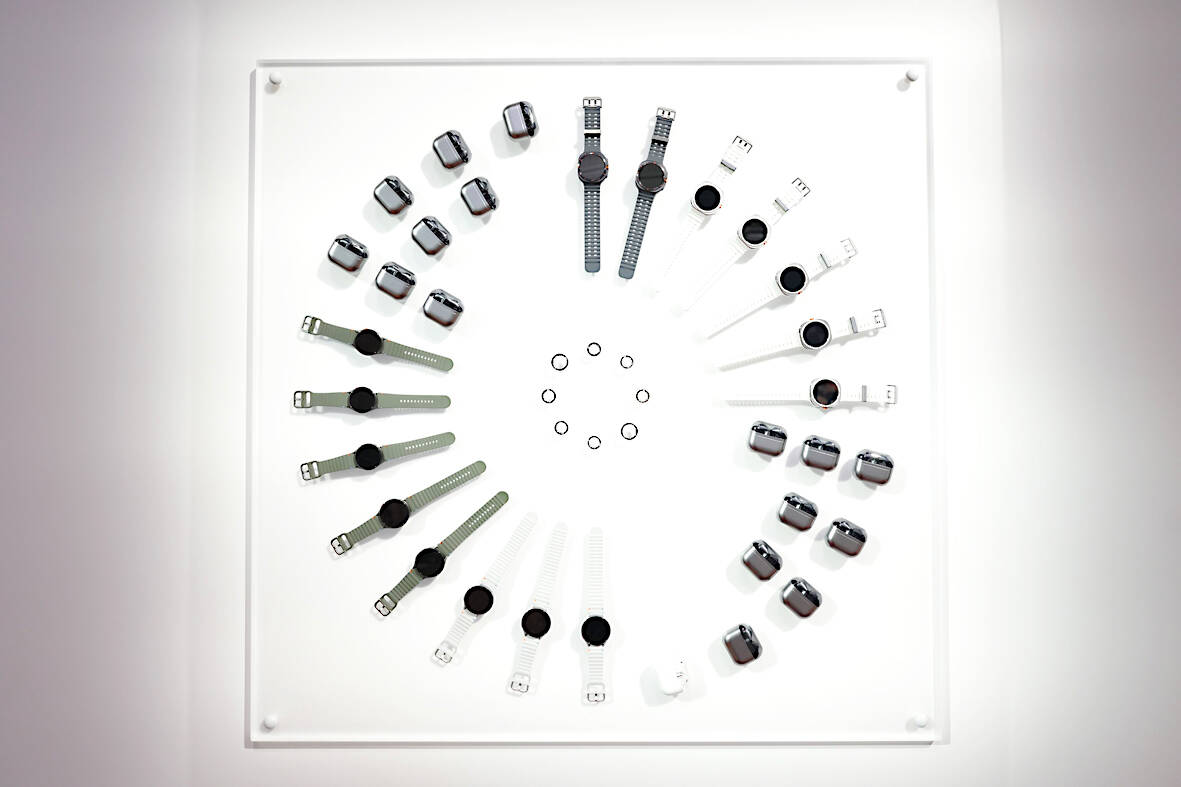Smartwatches could be used to help people quit smoking, a study suggests.
Researchers have developed pioneering motion sensor software that can detect the typical hand movements that occur when someone is holding a cigarette.
When cigarette use is detected, an alert flashes up on the smartwatch screen. An app on the device delivers a vibration with a text message designed by smokers and former smokers, offering support to stop smoking.

Photo: Bloomberg
One message reads “Stopping smoking lets you breathe more easily … Quitting is good,” while others contain a tally of how many cigarettes were smoked and the total number of drags taken that day.
The researchers, from the University of Bristol, believe their app is the first just-in-time intervention for preventing smoking relapse that runs entirely on a smartwatch and does not need to be paired with a smartphone.
Chris Stone, of the University of Bristol’s tobacco and alcohol research group, said an initial lapse was a vulnerable moment for people trying to quit, and risked leading to a full relapse to smoking.
“People like smartwatches. They like the idea of it delivering a message at the point that they smoke,” he said. “Therefore, if we can identify this point of lapse, and deliver an intervention precisely at that point, we have an opportunity to improve the success of the quit attempt.”
Stone added: “We have aimed to harness the latest thinking in intervention design, and deliver it in a convenient wearable package with minimal burden to the user and maximum engagement with behaviour change; and in doing so, make a difference to people’s lives.”
In the study, published in the journal JMIR Formative Research, the smartwatch app was tested on 18 people interested in quitting smoking. The participants were aged between 18 and 70, and smoked more than 10 cigarettes a day with their right hand.
They wore a TicWatch loaded with the app for two weeks, before completing a questionnaire consisting of 27 questions.
In total, 66 percent of participants said it was acceptable to wear the smartwatch with the motion sensor software, while 61 percent said the content of messages was relevant to them.
Positive feedback included people reporting that the app raised awareness of smoking, made them feel positive about quitting, made them stop and think, helped them smoke less and provided constant encouragement.
However, negative responses were that repeated messages lost their effectiveness, some messages did not appear quickly enough, there was not enough variety of messages and some were too vague.
The next step is a longer-term effectiveness trial, which could use a greater variety of messages, the researchers said.
Alizee Froguel, prevention policy manager at Cancer Research UK, said that the study shows that smartwatches could be a useful method to help people quit smoking, but more research is needed to understand how effective they are.
“There are many tools available to help people quit, and getting support from your free local stop smoking service will give you the best chance of stopping successfully,” she said.

Beijing’s ironic, abusive tantrums aimed at Japan since Japanese Prime Minister Sanae Takaichi publicly stated that a Taiwan contingency would be an existential crisis for Japan, have revealed for all the world to see that the People’s Republic of China (PRC) lusts after Okinawa. We all owe Takaichi a debt of thanks for getting the PRC to make that public. The PRC and its netizens, taking their cue from the Chinese Communist Party (CCP), are presenting Okinawa by mirroring the claims about Taiwan. Official PRC propaganda organs began to wax lyrical about Okinawa’s “unsettled status” beginning last month. A Global

Taiwan’s democracy is at risk. Be very alarmed. This is not a drill. The current constitutional crisis progressed slowly, then suddenly. Political tensions, partisan hostility and emotions are all running high right when cool heads and calm negotiation are most needed. Oxford defines brinkmanship as: “The art or practice of pursuing a dangerous policy to the limits of safety before stopping, especially in politics.” It says the term comes from a quote from a 1956 Cold War interview with then-American Secretary of State John Foster Dulles, when he said: ‘The ability to get to the verge without getting into the war is

Dec. 22 to Dec. 28 About 200 years ago, a Taoist statue drifted down the Guizikeng River (貴子坑) and was retrieved by a resident of the Indigenous settlement of Kipatauw. Decades later, in the late 1800s, it’s said that a descendant of the original caretaker suddenly entered into a trance and identified the statue as a Wangye (Royal Lord) deity surnamed Chi (池府王爺). Lord Chi is widely revered across Taiwan for his healing powers, and following this revelation, some members of the Pan (潘) family began worshipping the deity. The century that followed was marked by repeated forced displacement and marginalization of

Music played in a wedding hall in western Japan as Yurina Noguchi, wearing a white gown and tiara, dabbed away tears, taking in the words of her husband-to-be: an AI-generated persona gazing out from a smartphone screen. “At first, Klaus was just someone to talk with, but we gradually became closer,” said the 32-year-old call center operator, referring to the artificial intelligence persona. “I started to have feelings for Klaus. We started dating and after a while he proposed to me. I accepted, and now we’re a couple.” Many in Japan, the birthplace of anime, have shown extreme devotion to fictional characters and